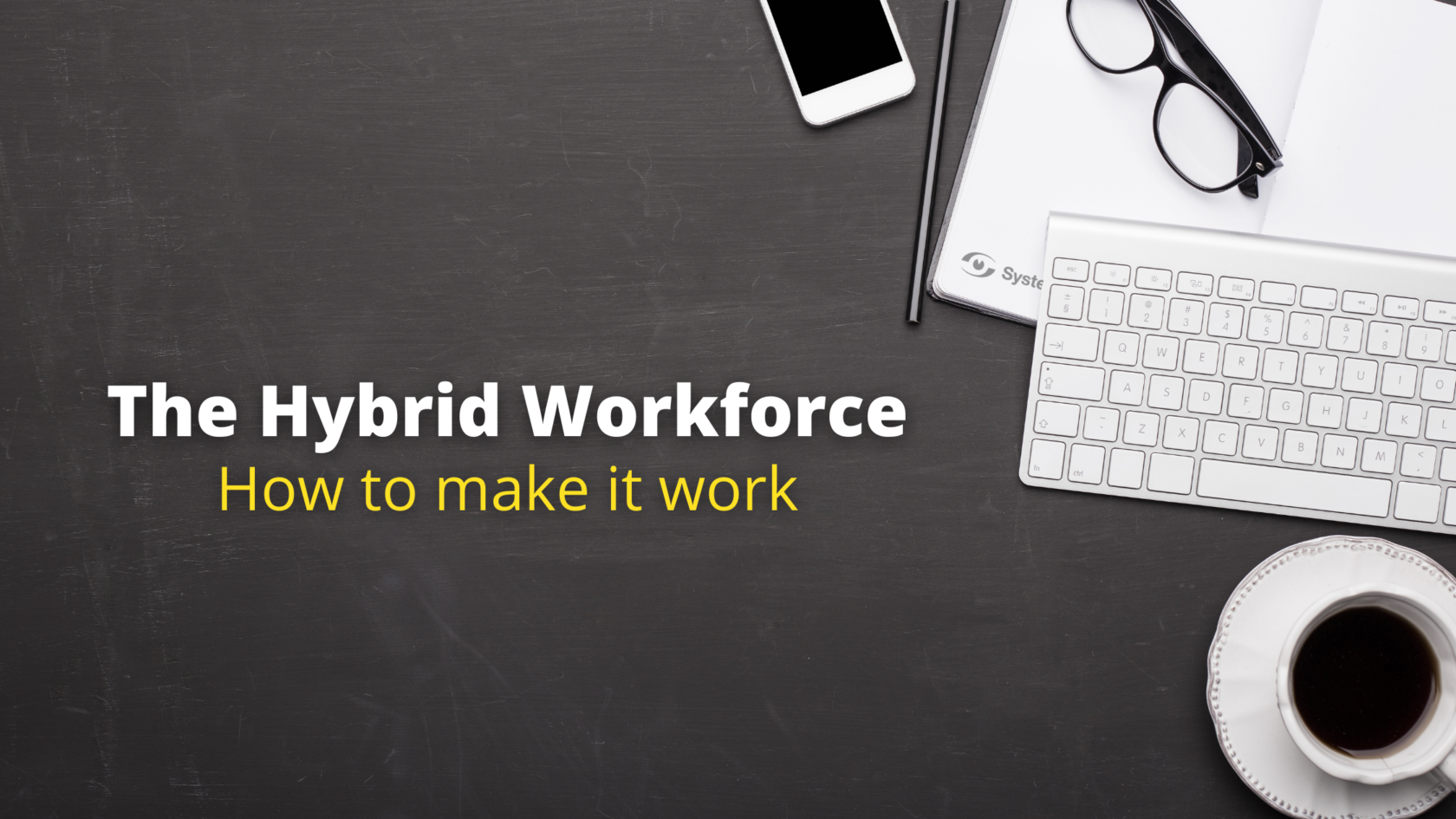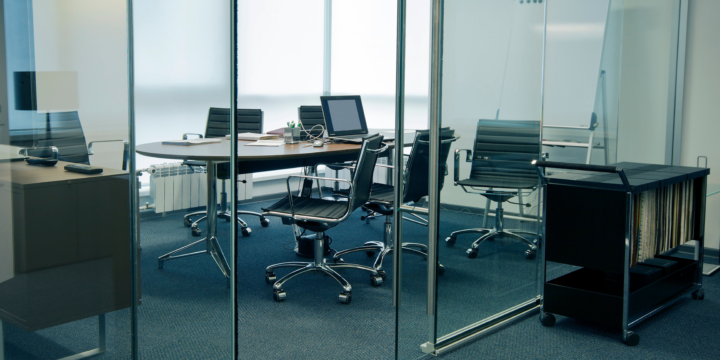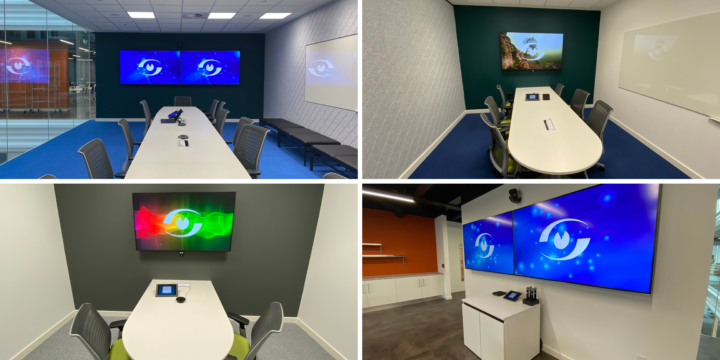
Over the last ten months, remote working has become essential to many industries worldwide. COVID-19 has become something we must live alongside, even long after a vaccine is widely available, remote working will still play a significant role in the employment mix. Adopting a hybrid workforce may be the solution to the future of work.
Companies like Microsoft, Twitter, and LogMeIn are taking the hybrid approach, allowing their employees to choose if they want to work from home or in the office. Being able to offer the choice to employees will become an attractive factor when it comes to recruiting.
By transforming the workplace into a safe, seamless, and engaging environment, organisations can build an agile workforce that can adapt to anything. However, the hybrid model is not without challenges and business leaders must consider this when making the shift to a hybrid workforce.


Technology has afforded us flexibility but integrating and adopting it in the workplace can be challenging. Employers have to spend time training their staff on IT and be able to provide technical support when things go wrong – which is guaranteed to happen even if you’re an IT expert. Your remote workers must be set up with secure network access and someone to contact when things go wrong.
To no one’s surprise, technology holds the key to making this new, blended workforce successful.
Remote collaboration has become our working life reality. Over the last year, video conferencing has kept us all connected. We appreciate it now more than ever. Video conferencing enables ideation and collaboration across distributed teams, locations, and organisations. Wherever your team decides to operate from, consider IT investments that your employees will use to become even more productive. How will your team virtually be able to hear, see, and work together? What unified communications and collaborations suit your business? Clear, consistent communication helps prevent burnout. The shift to remote working was just the start. Organisations now must sustain and create a hybrid workforce designed for productivity and high engagement.
Organisations should lean on technology and communication experiences that can be altered to fit any situation or working location.
The office your team normally works from must be equipped and specified to meet the needs of a hybrid workforce, with a focus on communication and connectivity. Business leaders need to first assess if their current office is set up to facilitate meeting rooms and other co-operation spaces that enable employees to connect with team members working from home.
In the next future of working, we will see a major change to office spaces themselves and the technology used within.
Businesses are rethinking about how to best use meeting rooms. Meeting rooms are being used for shorter and livelier collaboration sessions with a focus on enabling multiple people to participate and share whilst remaining safe. Huddle spaces are being built to allow teams to collaborate across hallways or continents. Organisations have reduced touchpoints, invested in more efficient technologies and standardisation throughout their offices. Barco ClickShare, wireless conferencing and presentation technology connects with the touch of a button. Providing collaboration tools like ClickShare, can engage both in-room and remote workers to feel equally empowered. As opposed to people gathering around a laptop to communicate and missing out on the devices’ limited camera and microphone capabilities.
When time and place restrict cooperation from happening, productivity can suffer. To minimize productivity loss involves creating a space where co-operation and interaction can happen while still following social distancing guidelines and immunizing the spread of COVID-19 – and also in the future when joining remote and in-office workers.

Collaborating with our team is how we’ve always created and shared our best ideas. Collaboration happens daily and opportunities for it should be made easy for remote and in-office workers. Collaboration allows us to learn from our colleagues and creates a workplace culture centred around learning and development. It’s essential to business morale that teams and departments be allowed to connect with their colleagues. You can create ad hoc teams who connect on a need-by-need basis but provide support to remote or isolated workers.
Consistent communication with your team reinforces a sense of connectivity and shared experiences that working from home might not always provide.
Unified communications are designed to bring us together and we should use them as such. AV Technology can help your team to collaborate across rooms, offices and countries. The future of hybrid workspaces are dependent on employee’s need for physical space which requires strategically evaluating how your current operations are set up. Technology can help you to achieve this future goal. Meeting room and desk-booking systems designate which team members will be present in the office to develop a schedule. By doing this, teams who need to collaborate frequently in-person can arrange to be in the office on specific days. Thus, maximising collaboration opportunities and creating a flexible work space.
Leaders should look to blend the office space for collaboration,and working from home intended for individual work. It’s important to be able to provide the same cultural experience digitally to remote workers and allow them to attend and collaborate in the office.
Despite the challenges mentioned, organisations will be rewarded by offering a flexible business model that can adapt to modern technology and exceptional unforeseen events, such as this year. By offering a hybrid work model, organisations will be able to recruit better talent, share ideas, and innovate with a diverse employee group and create better value for the business and its stakeholders. The need for the office and providing a shared setting for your employees remains relevant in the workspace hybrid. Companies will need to evaluate what works best for their business and employees. Experimenting within the bounds of hybrid working is how many organisations will move forward and adapt to the unknown future.

A recent client installation designed for huddle spaces, communal spaces and meeting rooms for easy collaboration.
Optimize your work place for collaboration and facilitate hybrid working with AV Technological Solutions.
Get in touch with our experienced team today.